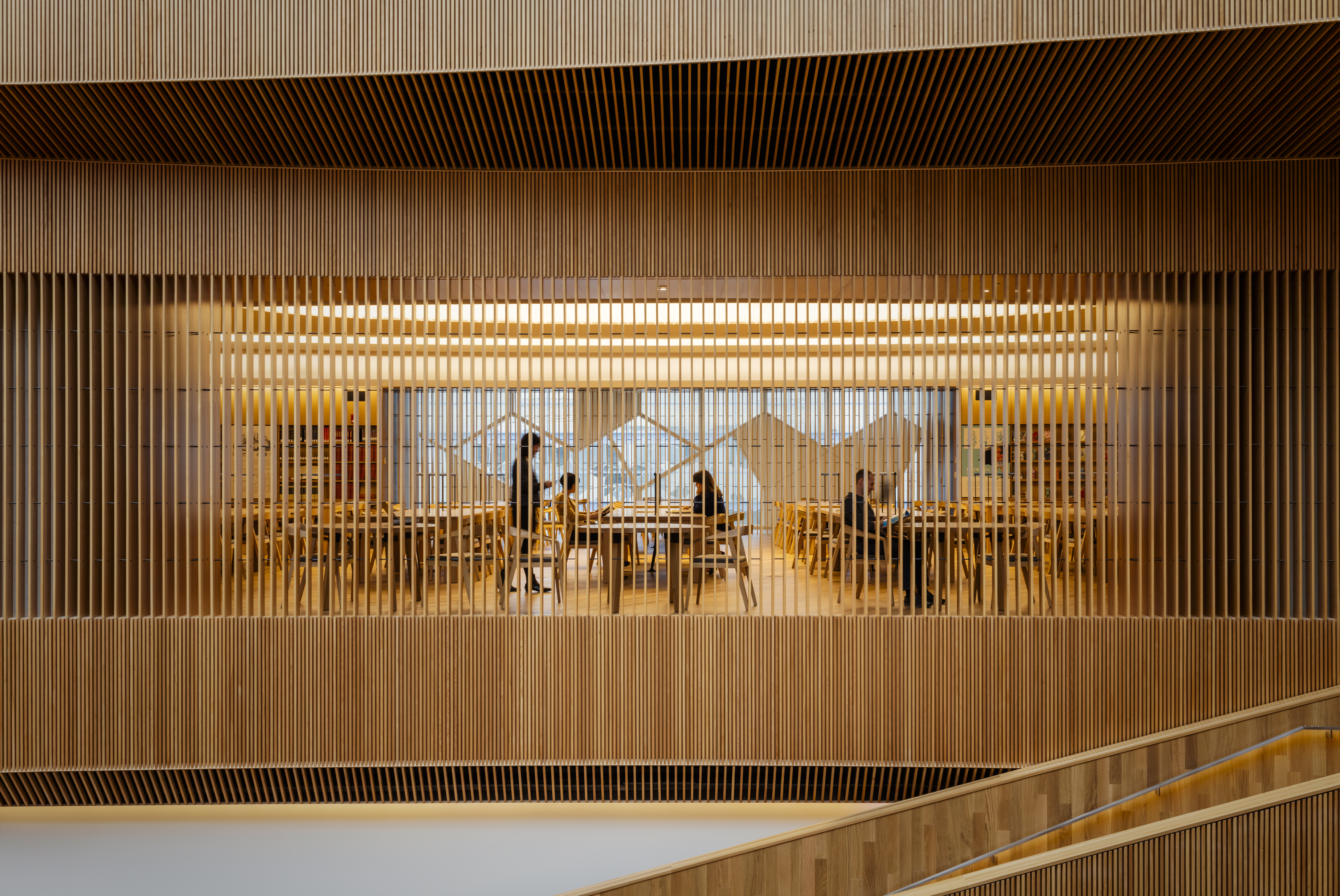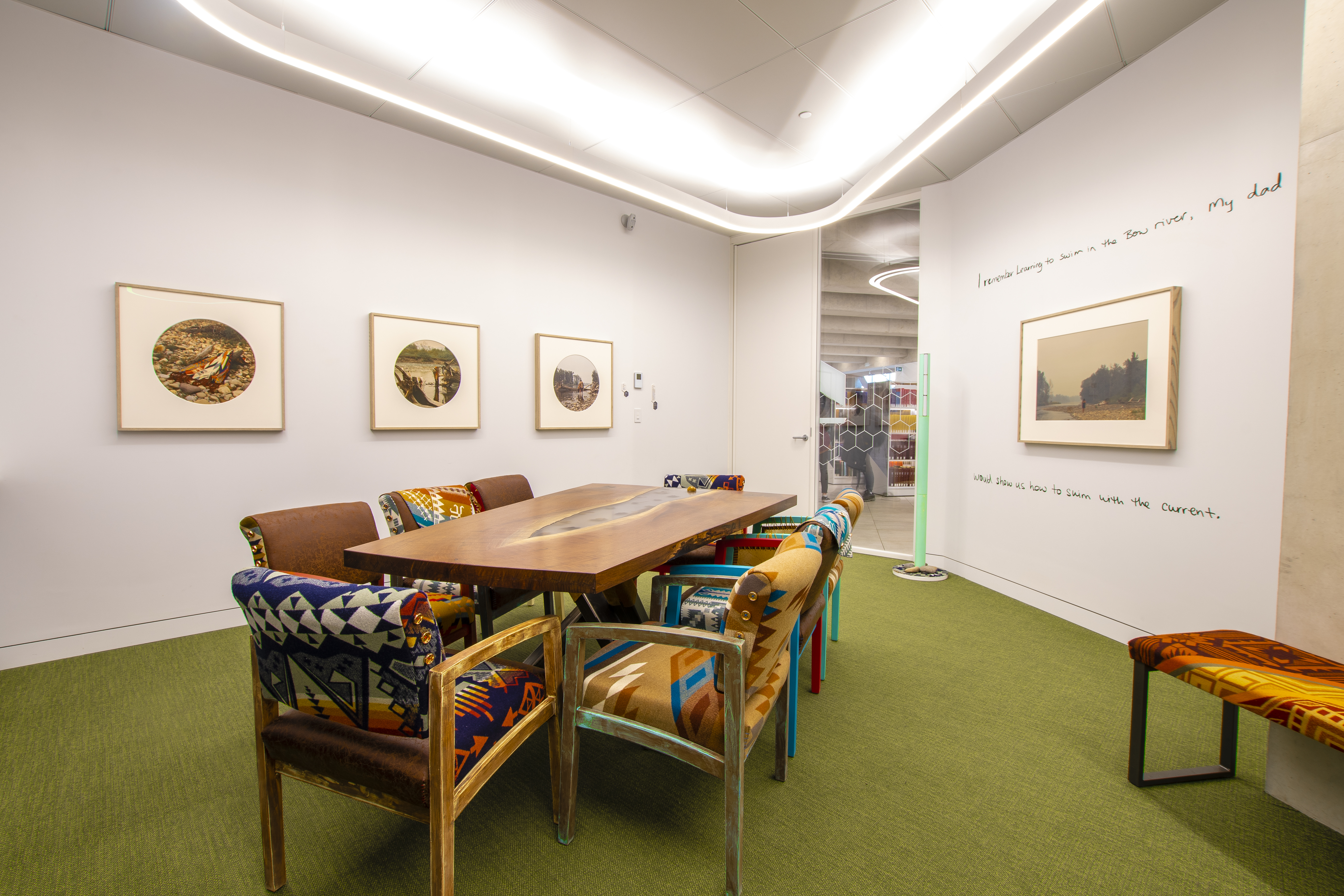A tourist attraction, community hub, venue of knowledge, an architectural achievement. What is it? It is a public library.
Calgary’s Central Library in Alberta, Canada recently gained recognition in Time Magazine’s Top 100 World’s Greatest Places of 2019 article.
This achievement is great recognition for all libraries. This is because the Calgary Central Public library is generating massive global awareness, which helps emphasize the benefits and importance of libraries. Calgary’s Central Library opened on November 1st, 2018 and has gained continued praise and recognition from day one.
In today’s post CEO of the Calgary Central Public Library, Mark Asberg shares his responses to questions we had about the creation, opening and success of Calgary’s wonderful central public library.

Question (Q): When creating the new library, what were the main goals in mind?
Mark Asberg (MA): It was important to us to build a space that responded to how community needs had evolved and also showcase how libraries are moving into the next century. When you walk into the Central Library, you realize that “this is a space for me”, and while that can mean something slightly different for each person, there is a beauty in that shared experience of joy and unexpectedness. We often hear, “I didn’t know libraries do that” and so the building itself, both in its form and function, helps us to challenge preconceived notions of libraries.
Another important element of this project is the neighborhood where it is rooted. The East Village is a downtown area that is undergoing a tremendous revitalization project, and the Central Library is a vibrant community hub that activates it.
It’s exciting to have a large building project, but for us it was important to see this opportunity as a launching pad for the modernization of the entire system. We receive nearly 7 million annual visits across 21 locations, so before opening the new Central Library, it was imperative to renovate each one of those community libraries to ensure that this opportunity wasn’t limited to one area.
Exterior photos of Calgary Central Library
Q: What previously not possible features does the new library provide?
MA: There are a lot of new features in the library. I would note that our audio and video recording and production studios have been very successful for would be podcasters and vloggers. In general, there is just a lot more space. The building is 240,00 square feet and that has allowed for more seating and over 30 public, free meeting rooms that are booked full regularly.
Our Children’s Library is 12,000 square feet and includes a play structure as well as STEAM inspired area for school-aged children called the Questionarium. Our free, daily storytimes often attract up to 200 children.
Our Teen Centre has also been an exciting development. It has attracted so many new young people to the Library and is one of our busiest areas in the evenings, specifically our new collective gaming area.
And finally, I would note our Indigenous Placemaking. All of our libraries are located within Treaty 7 territory, and as the Library works to building stronger relationships with Indigenous communities, it is imperative to create welcoming and respectful places. We currently have six permanent pieces of Indigenous artwork at Central Library and we intend to add more.
Q: Were there any buildings that inspired the design of your new library?
MA: The project team certainly visited a number of libraries around the world and explored how they have evolved over time. I think you see some of those learnings in our interior spaces, furniture, and shelving.
The building design by Snøhetta and DIALOG reflects the evolving role of libraries, and drew inspiration from Calgary’s surrounding landscape, which includes mountains, foothills and the prairies. Architect Craig Dykers cites the chinook arch, a cloud formation unique to the area, as a main inspiration. The 465 hexagonal panels that create the façade reflect the surrounding city and sky, and their interlocking, geometric shape is somewhat reminiscent of a beehive.
Q: What message do you hope the new library portrays to the public and to the visitors?
MA: I hope that people that visit us feel welcomed and inspired. There is a natural warmth and happy quality to the building that visitors often remark on.
Q: What do you think the new library represents for the city and internationally?
MA: Calgary was recently named the world’s fifth more livable city by the Economist. It is a great place to work and live, and I think that is because we are always looking forward.
We are a young and motivated city, and our community needs will continue to evolve, so the Library has to be responsive to that. We’ve created a space that is flexible and that will continue to develop to serve our community. For us, this means investing into technology, partnerships, and outreach.
We’ve also had a number of other library systems visit us since opening, and it has been incredibly rewarding to share what we learned and help inspire others to dream big. Central Library represents the renaissance of public libraries and what they mean to people as they continue to remain relevant across north America and around the world.
I’m also conscious of how important it is to demonstrate the benefits of investing in public infrastructure. Providing public space is one of the paramount roles of libraries, and when those spaces are vibrant, welcoming, and useful, then you have the opportunity to share why libraries are more than relevant; they are critical to helping people of all ages realize their potential and fully participate in the community.
Interior photos of Calgary Central Library
Q : Are there any interesting stats you’d like to share since the opening of the new library venue?
MA: Here are a few:
- 4 million visits since opening on November 1, 2018
- Over half-a-million items checked out
- 550 free tours given
- Nearly 14,000 room bookings
- Over 1000 programs delivered
- Named one of Time Magazine’s 100 World’s Greatest Places
- Mentioned in The New York Times’ 52 Places to Go in 2019
Interested in eBooks? Turn your iPhone, iPad or Android device into a digital Library with @meetlibby — it’s free to sign up with your Library card: https://t.co/r5s6dOmxlx #yyc pic.twitter.com/6U1LEqPmBA
— CalgaryPublicLibrary (@calgarylibrary) September 13, 2019
Q: What advice would you give for other libraries aiming to achieve similar projects?
MA: Think big. Involve your community, and don’t wait. You can start prototyping with the infrastructure that you have in place. As you learn, it will likely grow into something quicker than you realize and once you have momentum you can accomplish amazing things.
Contact for Calgary Public Library
To learn more about the Calgary Central Public Library check them out at their
Website: calgarylibrary.ca
Twitter: @calgarylibrary
Facebook: https://www.facebook.com/calgarylibrary/
Recent posts
Green Libraries: How Sustainable Design is Shaping the Future of Public Libraries
In this week's Princh Library Blog post, recurring guest writer Sam L. Bowman discusses an ever so important topic: sustainable design and [...]
Librarians Supporting Digital Literacy in the Community
In this week's Princh Library Blog, Nina Grant covers why digital literacy is important, the variety of ways in which librarians are supporting [...]














Leave A Comment